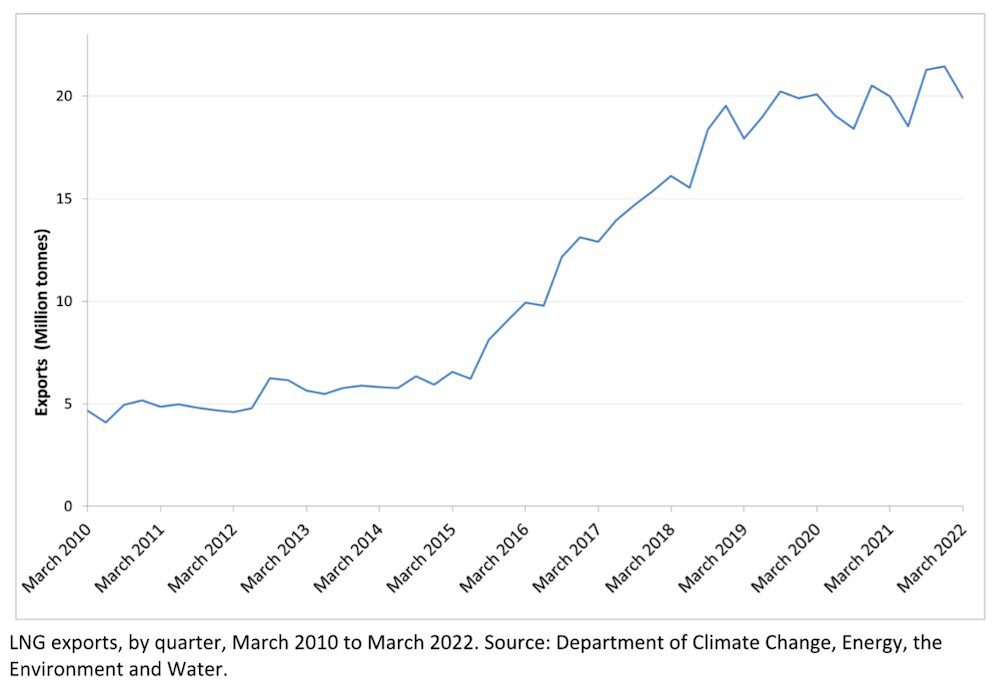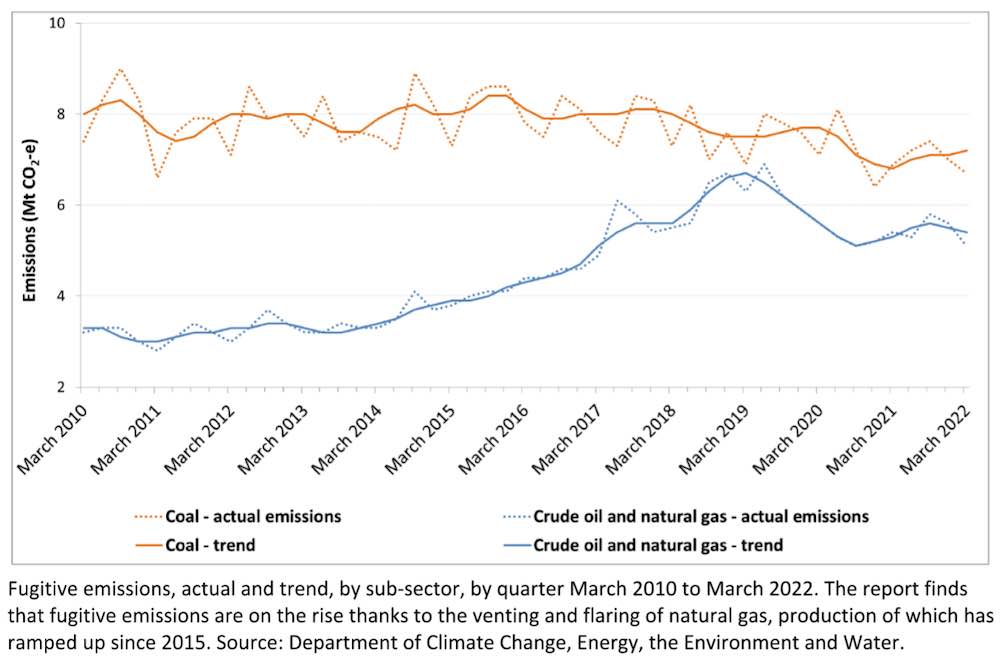Australia’s greenhouse gas emissions have jumped again over the last 12 months, as the growth in fossil fuel exports, and particularly LNG, offset the significant gains being made in the electricity grid, where renewables continue to displace coal.
The government’s latest National Greenhouse Gas Inventory Quarterly Update, show a marked reduction in electricity emissions from the national grid, down 3.1% on the previous year, but overall emissions in the year to March 2022, were 487.1 million tonnes, some 7.4 million tonnes (1.5%) higher than the previous year.
Climate Change minister Chris Bowen blamed the increase on the previous government, and insisted the country was on track to make real climate gains and meet its target of a 43 per cent cut in emissions below 2005 levels.
Australia’s overall emissions are currently 21.6 per cent below the 2005 levels, but most of these gains come from the controversial land use and avoided forestation measures, which were high in the baseline year.

Electricity emissions, which make up the greatest share of Australia’s emissions, are down 25% from the peak recorded in the year to June 2009 – thanks to renewables and efficiency – but those gains are overshadowed by losses from all other emissions sources.
Transport emissions rose by 5.4%, thanks to the increase in movement post-pandemic, while emissions from stationary energy excluding electricity – which includes emissions from the direct combustion of fuels in the manufacturing and mining sectors – rose by 3.7%.
The department attributes this to the export of liquid natural gas (LNG). In fact, LNG production has ramped up by 144% since March 2015, much of which is exported, meaning its combustion is not reported in Australia’s figures.

Agricultural emissions were up by 4.4%, attributed to the easing of drought conditions, meanwhile fugitive emissions from the venting and flaring of natural gas were up 1.2%.

At the granular level, emissions for the March 2022 quarter were actually 0.7% lower than the previous quarter, reflecting gains across electricity, stationary energy, fugitive emissions, industrial processes, waste and Land Use, Land Use Change and Forestry (LULUCF).
The LULUCF sector accounted for a -8.1% of Australia’s overall emissions, a net sink thanks to a decline in land clearing.
Those gains were mostly offset, however, by increases in emissions across transport and agriculture.

Bowen said the figures were unsurprising.
“We know that in lieu of a climate or energy policy, the previous government relied on a pandemic and drought to reduce emissions,” he said. “Even a global recession could only interrupt the LNP’s decade of climate policy neglect for so long.”
But he insisted Australia is now on track to reduce its emissions.
“While the impact of this neglect can’t be turned around overnight, the Albanese Government is getting on with the job of creating the market signals and reforms necessary for a booming Australian economy on a trajectory to net zero by 2050,” he said.
The Labor government’s commitment to net zero has been called into question following the announcement by minister for resources Madeleine King of 46,000 square kilometres of new oil and gas exploration.
In response to this, 100 scientists and academics on Tuesday signed an open letter calling on emissions from new coal and gas projects to be considered in the federal approvals process.
“Every tonne of greenhouse gas emissions and fraction of a degree of warming is a blow to the health of our ecosystems and economy,” says the letter. “Any new coal or gas project will dangerously worsen climate change.”
King’s rhetoric have been called into question. In an interview on ABC radio Perth last week, which bore faint echoes of Scott Morrison’s bring-your-coal-to-work-day fiasco, she sought to remind listeners that carbon dioxide was not poisonous.
“It’s the bubbles in your soda water or out of your SodaStream,” she explained. “So, you know, we’ve got to keep it in balance, how we think about carbon dioxide.”










